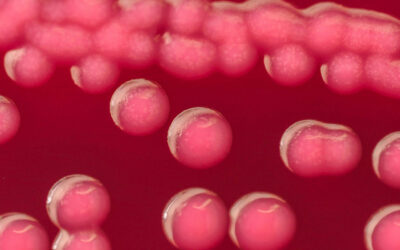To lower the cost of hydrogen fuel researchers, combine precious metals with organic molecules to create efficient catalysts for the production of hydrogen gas.
Hydrogen fuel is touted as a clean and sustainable replacement for fossil fuels. Hydrogen is a zero-emission fuel and when produced with renewable energy is carbon neutral. Unfortunately, the cost of production is not economically feasible. This is in large part due to the requirement for the rare and expensive metal platinum.
To produce hydrogen, a reaction called the hydrogen evolution reaction is used. Here electricity splits water, into hydrogen protons, oxygen gas, and freed electrons on an anode. The freed electrons travel via an external circuit to a cathode and are met by the hydrogen protons where they combine to produce hydrogen gas.
However, for this reaction to work the cathode must bind the hydrogen efficiently but not so strongly that the gas is not released after it forms. To create the ideal conditions the cathode is coated in platinum. This rare metal binds with hydrogen atoms with suitable strength and this balance makes it an efficient catalyst and reduces the amount of energy required to run the reaction.
Unfortunately, platinum is rare, and the amounts needed to scale up hydrogen production to meet modern demand would be extremely expensive. Therefore, finding a replacement for platinum is essential if the world wants to switch to hydrogen fuel.
At the Tokyo University of Science, Hiroaki Maeda, and Hiroshi Nishihara, along with collaborator across Japan, believe they found a solution — palladium.
Palladium, like platinum, is also an expensive rare metal. How then can palladium reduce the costs of hydrogen production? The answer, combine it with another material and use less of it. In this case that other material is called hexaaminobenzene.
Hexaaminobenzene is an organic molecule made of carbon, hydrogen, and nitrogen. When combined with palladium it forms what are called coordination nanosheets which are thin two-dimensional materials. This nanosheet structure gives it several useful properties.
“The amount of palladium ions in the [coordination nanosheet] structure is about ten times less than platinum and palladium metals in the same volume,” said Maeda. Despite using less of the metal, the material still has the needed conductivity to transport the electrons needed for the reaction. And as Maeda explains, “the pores in the structure provide smooth mass transport of protons and hydrogens.”
To test whether the nanosheets perform as well as platinum in the hydrogen evolution reaction the researchers synthesized the palladium, hexaaminobenzene nanosheets directly on to the electrode surfaces. The result was a reaction that was nearly as efficient as platinum. The new material required very little extra energy to produce hydrogen. In a press release the authors wrote that this makes the coordination nanosheets, “among the most efficient [hydrogen evolution reaction] catalysts developed to date, making it a promising low-cost alternative to platinum.”
The team has investigated several combinations of metals and hexaaminobenzene, but the use of palladium is the best. The next steps for the team are to establish methods to efficiently synthesize the new electrodes at a larger scale.
One potential hurdle is the requirement of inert conditions for the production of the electrodes modified with nanosheets as they cannot be obtained in the presence of oxygen.
Durability is another lingering question. In initial experiments the electrodes performed well, remaining intact after 12 hours in the highly acidic conditions. However, their stability of months and years needs to be assessed.
In a press release Maeda concluded, “our research brings us one step closer to making H₂ production more affordable and sustainable, a crucial step for achieving a clean energy future.”
Reference: Hiroaki Maeda, et al. Synthesis of bis(diimino)palladium nanosheets as highly active electrocatalysts for hydrogen evolution, Chemistry – A European Journal, (2024). DOI: 10.1002/chem.202403082

















